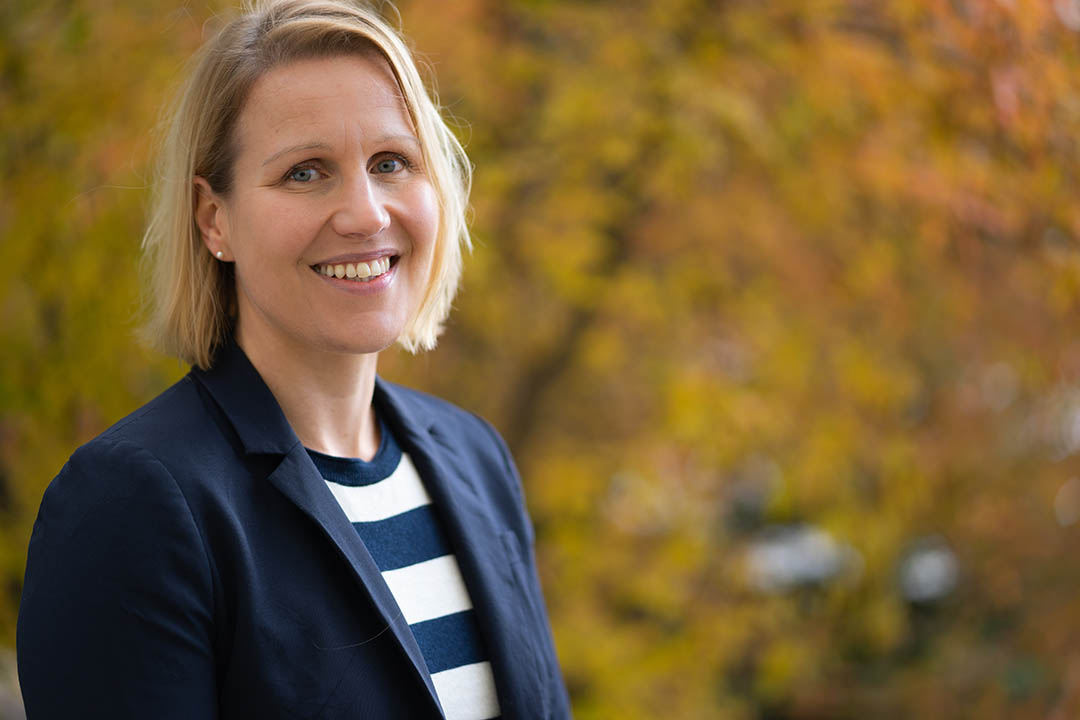
Seniors, patients, astronauts will all benefit from new USask research on bone health
SASKATOON – A University of Saskatchewan (USask) team led by kinesiology professor Saija Kontulainen has been awarded $200,000 by the Canadian Institutes of Health Research (CIHR) to research whether aerobic and resistance exercises can prevent bone loss associated with fat accumulation in muscles and bone marrow due to inactivity.
By Sarath Peiris for USask Research Profile and ImpactThe findings will help to reduce falls and fractures caused by weakened muscles and bones in older Canadians, aid in the recovery of COVID-19 patients and others confined to prolonged bed rest after injury or surgery, and guide measures to maintain the bone health of astronauts during space flight.
Kontulainen’s study, which focuses on bone and muscle health, is part of a 17-month national project funded by CIHR to understand the health impacts of inactivity. Eight university teams across Canada have each been awarded $200,000 to study the effects of a 14-day bed rest period on the brains and cardiovascular and other physiological systems in a total of 24 volunteers—12 men and 12 women.
“This project is unique because, for the first time, participants are in the 55-to-65 age group while previous bed rest studies involved only young people,” said Kontulainen. “With one-quarter of Canada’s population expected to be seniors by 2035, it’s important to understand mechanisms that cause bone deterioration through aging and inactivity.”
Researchers from across Canada will get a unique opportunity to look at new scientific knowledge involving impacts of inactivity on different aspects of human physiology, and then combine data to look at the associations between body systems, she said.
The team from McGill University, where the study will take place starting early next year, will lead the data collection and exercise intervention during bed rest for all eight teams.
The Canadian Frailty Network and the Canadian Space Agency are partnering with CIHR on the Health Impacts of Inactivity project.
Six males and six females will be randomly assigned either to an exercise or control group, each consisting of 12 participants at the McGill University Health Centre. Participants in the exercise group will do daily cycling and resistance training to strengthen muscles in their arms and legs, while the control group will get no exercise.
Researchers will measure bone porosity (tiny holes in the bone), along with muscle and bone marrow fat in the calves, thighs and forearms of all participants, before and after bed rest. Follow-up testing at two weeks and two months after the study will help determine how quickly, or if, the bones and muscles of participants are recovering.
Kontulainen’s team is testing two hypotheses. First, that inactivity increases fat accumulation (adiposity) in muscle and marrow, as well as porosity in bone. Second, that exercise intervention will prevent or reduce these negative changes in muscle and bone due to inactivity.
“We know that in terms of musculoskeletal health, inactivity, weightlessness, and lack of loading stimulus (from weight-bearing exercise) lead to bone loss. But we don’t know how bone tissue is altered, the mechanisms underpinning this change, or the mechanisms that exercise can counteract,” she said.
“If we are able to discover that fat accumulation is linked to bone deterioration, we can then target the mechanism that makes bone more fragile with countermeasures like exercise, and test other interventions such as nutritional or pharmacological therapies, or a combination of these.”
The USask group is employing advanced magnetic resonance imaging (MRI) technology to look at both bone marrow and muscle adiposity, and link it to bone porosity. Researchers are also measuring bone structure in very fine detail to see if porosity is increasing, and whether these changes differ between exercise and control groups.
What Kontulainen finds particularly exciting the opportunity to test the performance of a portable MRI prototype, which was developed in team member Gordon Sarty’s lab for use on the International Space Station, against the data obtained from top-of-the-line MRIs in use today.
“If the portable tool is shown to capture similar changes in muscle and bone, it can be used not only on space missions to the Moon or Mars, but in remote and rural areas in Canada and around the world,” she said.
-30-
For more information, contact:
Victoria Dinh
USask Media Relations
306-966-5487
victoria.dinh@usask.ca

